So here’s a scenario. You walk out to your garage early in the morning — coffee in hand, half awake — and the door glides open with a soft hum, neatly rolling into a compact coil above you. No clunky panels swinging out. No weird squeaks. That’s the charm of a residential roll up garage door, and honestly? It’s kind of underrated.
More and more homeowners are leaning toward these sleek, space-saving doors — especially in urban areas or anywhere where space is, well, limited. But it’s not just about saving a few feet of overhead clearance.
There’s more. These doors offer serious durability, better security, and they look sharp, too. Whether you’re upgrading from a tired old sectional garage door or starting from scratch on a new build, there are some real perks here.
In this guide, you’ll find 10 essential tips and benefits that go beyond the sales pitch — the kind of stuff you’d want to know before installing one of these at home. Whether you’re into energy efficiency, clean modern design, or just tired of dealing with broken springs on your conventional panel garage door — we’ve got you.
(P.S. If you’re still comparing options, you might want to peek at our [Types of Garage Doors for Homes] or check out [Garage Door Installation Costs Explained]. They pair well with this article.)
Top 10 Expert Tips and Benefits of Residential Roll Up Garage Doors
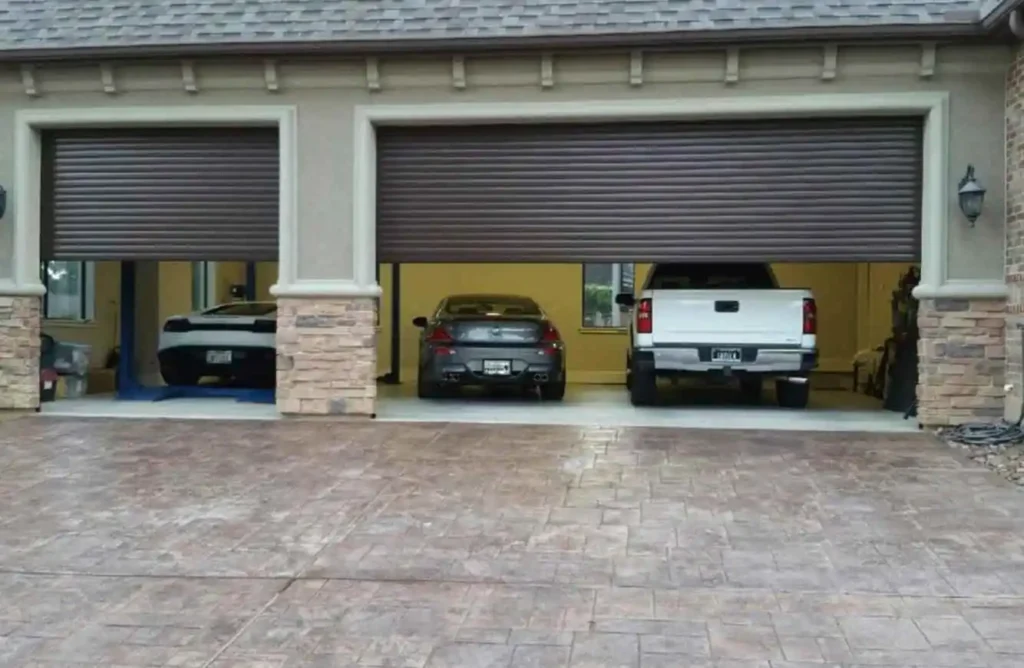
Choosing the right garage door isn’t just about looks — it’s about safety, durability, and long-term performance. Residential roll up garage doors have quickly become a top choice for homeowners thanks to their compact design, smooth operation, and energy efficiency.
Unlike traditional swing-out or panel doors, roll-up models save space, resist harsh weather, and require less maintenance. Whether you’re upgrading your current system or planning a new installation, understanding the core benefits and smart tips can help you make the right decision.
1. What is a Residential Roll Up Garage Door?
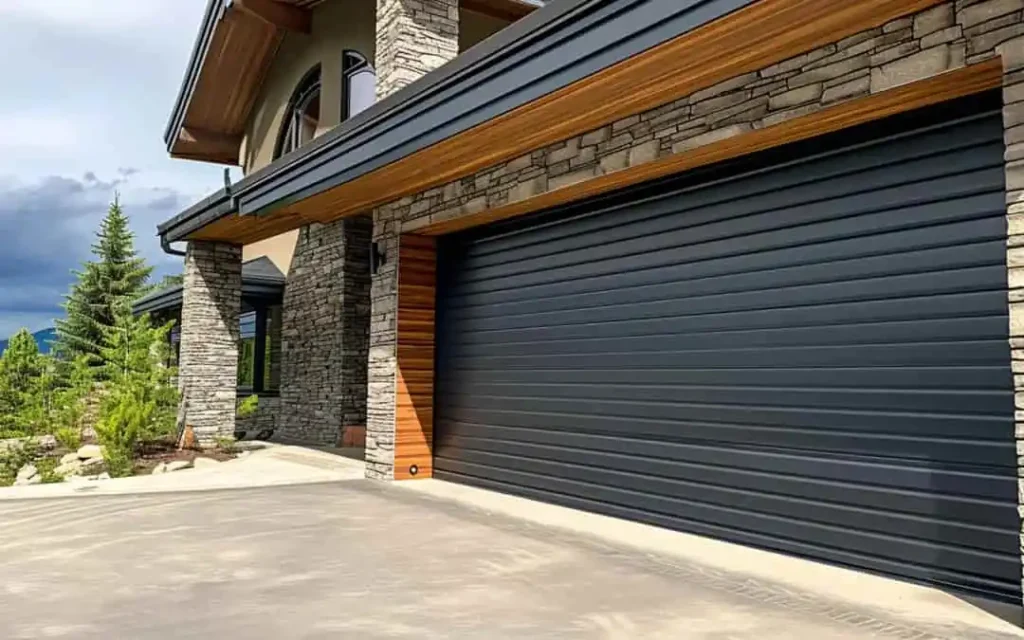
A residential roll up garage door is made of horizontal slats that roll vertically into a compact coil above the doorway. These doors are typically made from galvanized steel, aluminum, or insulated composite materials, offering both strength and energy efficiency.
They’re ideal for homes with limited driveway space and are often used in modern or minimalist designs. Thanks to their robust structure and vertical motion, they provide excellent security, weather resistance, and space-saving functionality — perfect for today’s compact residential settings.
How It Works & What Makes It Unique
At its core, a residential roll up garage door uses a simple but clever mechanism. Instead of sliding up along the ceiling like a traditional sectional garage door, it rolls into a compact coil above the entrance using slats — usually metal, like steel or aluminum — connected by hinges. The result? A smoother, cleaner movement. Fewer moving parts. Less chance of mechanical drama.
Think of it like a metal curtain that disappears when you open it. But stronger. Much stronger.
It’s especially helpful in tight garages or converted spaces where a ceiling-mounted track would just get in the way — maybe you’ve got a low ceiling, or overhead storage bins that you’d rather not lose. This is where roll-up doors quietly shine.
Here’s a quick comparison to help:
| Feature | Roll-Up Garage Door | Sectional Garage Door |
|---|---|---|
| Opening Style | Coils into drum | Slides along ceiling |
| Space Needed | Minimal | More overhead clearance required |
| Durability | High (steel slats) | Moderate (panels prone to damage) |
| Maintenance | Low | Medium to high |
Pro Tip: If you’re someone who’s constantly dealing with stuck tracks or sagging panels, the EZ-SET® Roll-Up Spring System can be a game-changer. It’s smooth, and best of all — quiet.
2. Space-Saving Design for Compact Homes
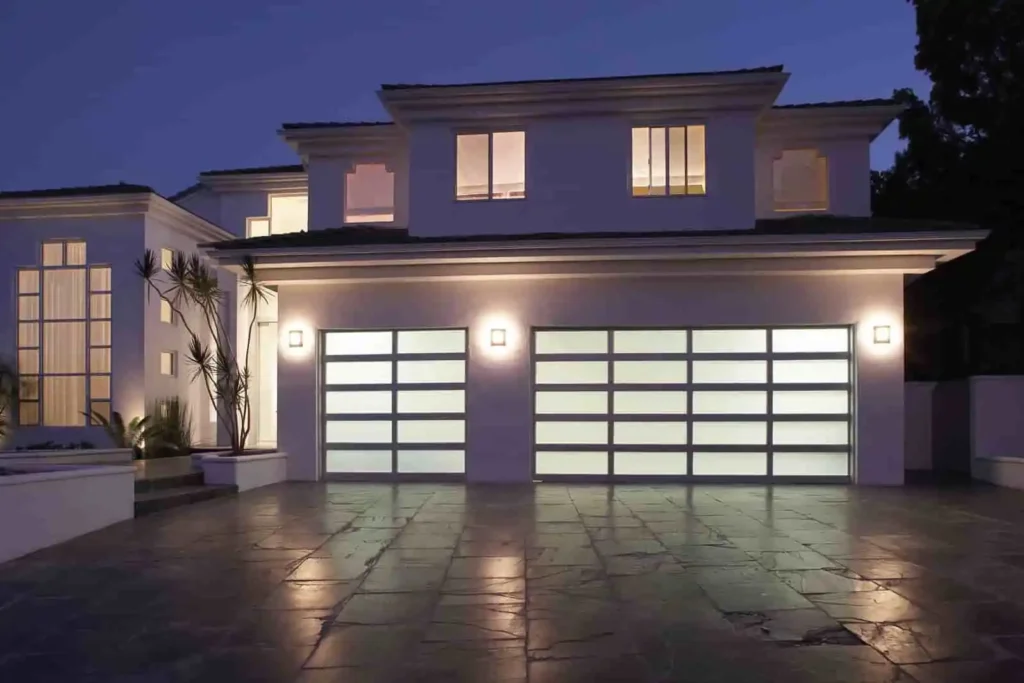
Ideal for Urban, Narrow, or Low-Ceiling Garages
Alright, let’s talk space. Because — let’s be honest — most of us don’t have a massive garage with tons of clearance. If your garage doubles as a workshop, gym, storage zone, or laundry cave, a space-saving garage door just makes sense.
Roll-up doors, by design, don’t eat up ceiling or wall space. They open vertically and curl into a tight roll at the top. No bulky tracks. No headroom wasted. You can install shelving, hanging storage, even a ceiling-mounted bike rack — and still have a fully functional garage.
Here’s where this door shines:
- Urban townhomes with narrow garages
- Converted sheds or yard barns now doubling as storage
- Basements or lower-level garages with lower-than-usual ceilings
- Detached garages with tricky layouts
And here’s something I didn’t expect: cleaning up the clutter feels easier. With fewer mechanical parts hanging in the way, your space feels more open — even if it’s technically not any bigger.
Question I get a lot: Can roll up doors help make my garage look less cluttered?
Short answer? Yes. Less mess, more vertical wall use, and fewer weird shadows overhead.
3. Durability & Long-Term Performance
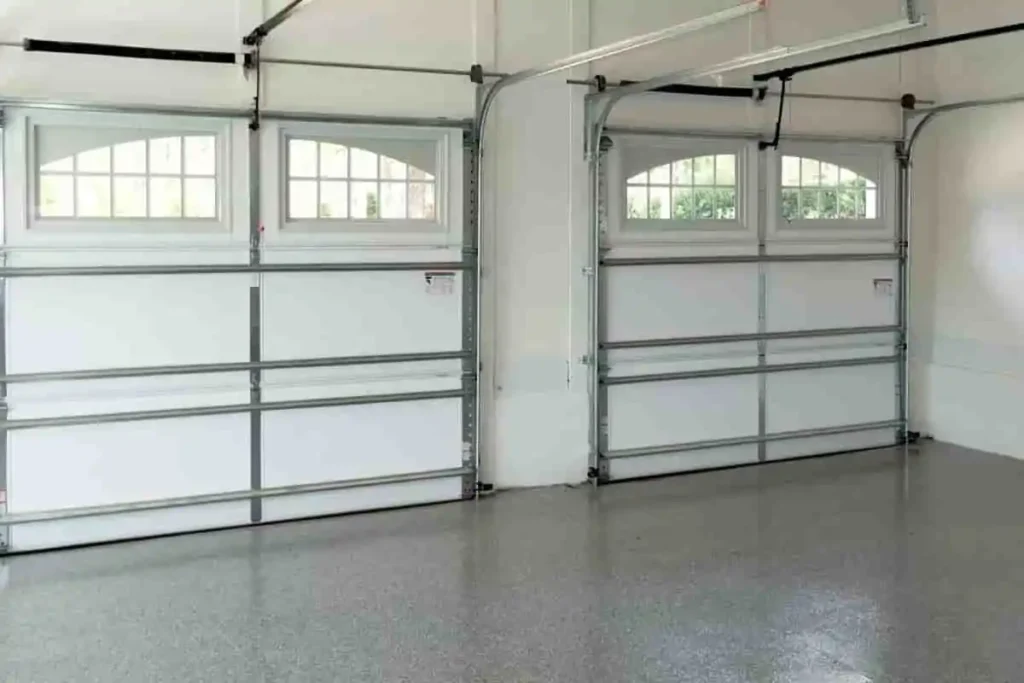
Residential roll up garage doors aren’t just about sleek looks — they’re built to last. When you think about how often your garage door openers and closes in a week (grocery runs, school drop-offs, hauling out the trash…), you’ll want something that doesn’t wear out quickly. This is where roll-up designs start pulling ahead of the pack.
These doors are typically made from galvanized steel or heavy-duty aluminum, and many come with a rust-resistant finish like the Siliconized Polyester Paint System — which means they can survive rain, snow, heat, and dust without flaking or fading. Some models, like the insulated steel roll-up door, even come with double-steel facings to make them tougher against everyday wear.
Built to Withstand Weather & Wear
Here’s why durable garage doors matter more than you think:
- Weather Resistance: High wind-load ratings and sealed edges help them hold up during storms (especially important if you live somewhere wild like coastal Florida or Texas).
- Daily Usage: Designed for thousands of open/close cycles — ideal for busy families or anyone using the garage as a main entry.
- Rust-Free Lifespan: Many premium models come with baked-on enamel coatings or paint systems that resist fading and rust.
- Low Maintenance: Fewer parts = fewer things to break.
Here’s a quick table comparing material options:
| Material | Pros | Lifespan | Best For |
|---|---|---|---|
| Galvanized Steel | Tough, wind-rated, rust-resistant | 20+ years | Most homes |
| Aluminum | Lightweight, modern-looking | 15–20 years | Coastal homes |
| Insulated Steel (Double-Faced) | Ultra-durable, thermal protection | 25+ years | Cold or hot climates |
Pro Tip: Look for models with metal slats and guide rail locking systems. They not only last longer but also offer smoother, quieter operation.
4. Enhanced Security Features
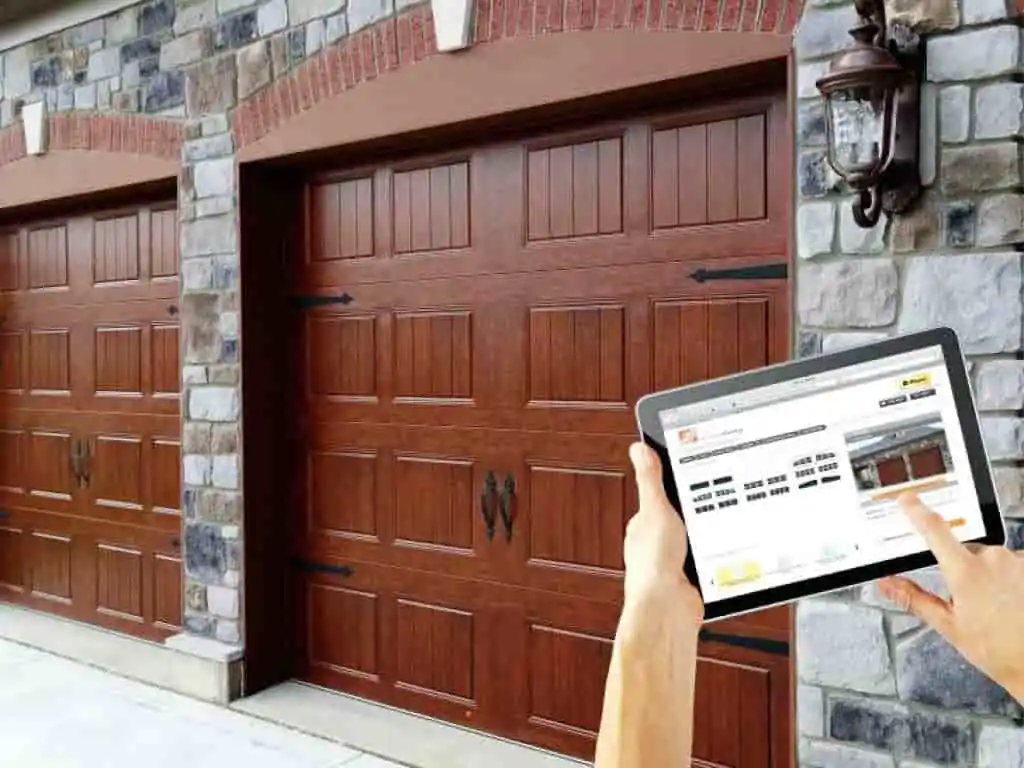
When your garage connects to your home — or even just stores expensive gear — garage security becomes a real priority. That’s where residential roll up garage doors step up. Their design isn’t just convenient — it’s inherently secure.
Some folks assume that “rolling doors” sound flimsy. Not true. Many models are equipped with tamper-proof guide rails, heavy-duty door slats, and built-in locking systems that make them much harder to pry open than traditional panel doors. And when you throw in modern tech like infrared sensor systems or Wi-Fi-connected locks, they become even harder to outsmart.
Keep Your Home Safe with Modern Locking Systems
Here’s how roll-up garage doors boost your home’s protection:
- Smart Locks & Keypads: Control access from your phone or set entry codes for family.
- Motion Detection & Cameras: Pair with a garage buddy Halloween-style system for full smart home integration.
- Manual Locking Options: Many models allow physical locks as a backup in case of power loss.
- Secure Tracks: Kendall Center Yellow Garage-style track systems prevent lifting or shifting by force.
- Fire-Rated Options: Some Thermiser® doors come with fire and smoke containment ratings — especially valuable for attached garages.
Want a real-world bonus? In tight-knit neighborhoods or city areas where package theft is a concern, having a secure, camera-equipped roll-up garage door can double as a package drop area.
Pro Tip: For added peace of mind, choose a model rated for rolling service doors with a guide rail locking system — these doors often meet industrial-grade security specs while still fitting residential aesthetics.
5. Energy Efficiency and Insulation Options
A roll-up garage door isn’t just functional — it can help lower your energy bills too.
Especially if your garage is attached to your home or doubles as a workspace.
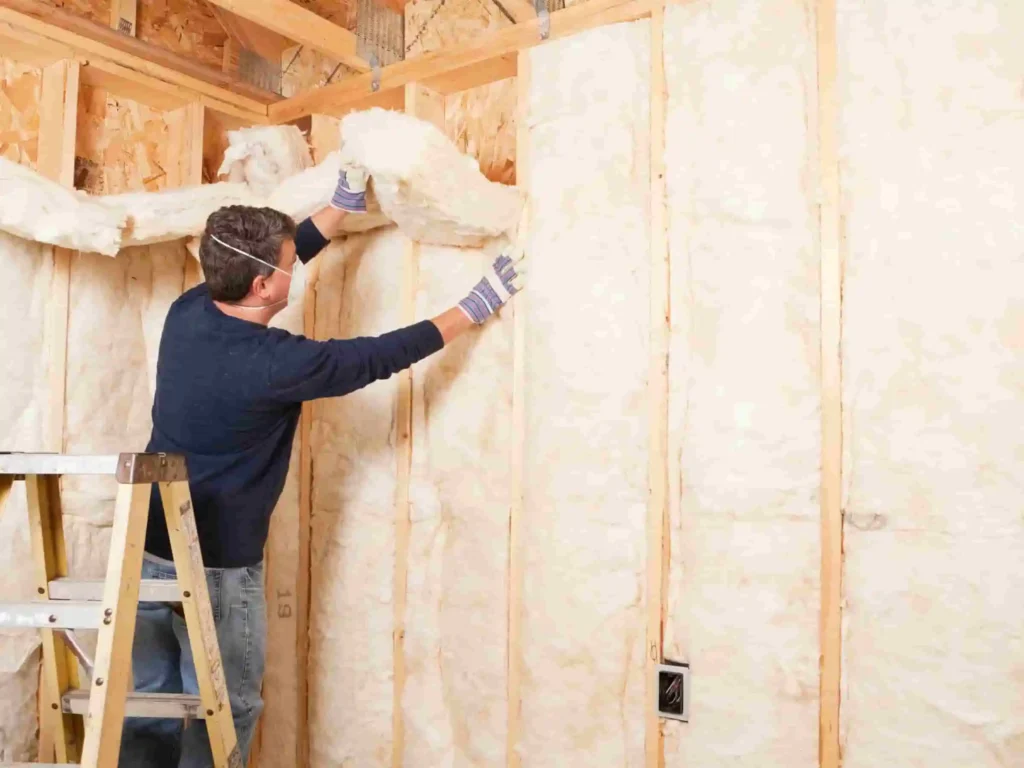
Cut Down on Heating & Cooling Costs
Insulated roll up garage doors (like the insulated double-steel faced conventional door) often feature polyurethane or polystyrene cores, helping maintain indoor temperatures. Whether it’s blazing summer or freezing winter, they make a noticeable difference.
Benefits of insulated roll-up garage doors residential setups:
- Maintain a stable garage temperature year-round
- Reduce heat loss in winter and block heat gain in summer
- Lower HVAC strain if your garage leads into the home
- Create a more comfortable environment for workshops or gyms
Table: Insulation Comparison
| Insulation Type | Material | R-Value Range | Best For |
|---|---|---|---|
| Polyurethane | Foam-injected | R-16+ | Maximum insulation |
| Polystyrene | Panel layers | R-6 to R-10 | Budget-friendly comfort |
Pro Tip: Pair your insulated garage door with door seals and a garage door repair checkup to eliminate energy leaks.
6. Customization & Aesthetic Options
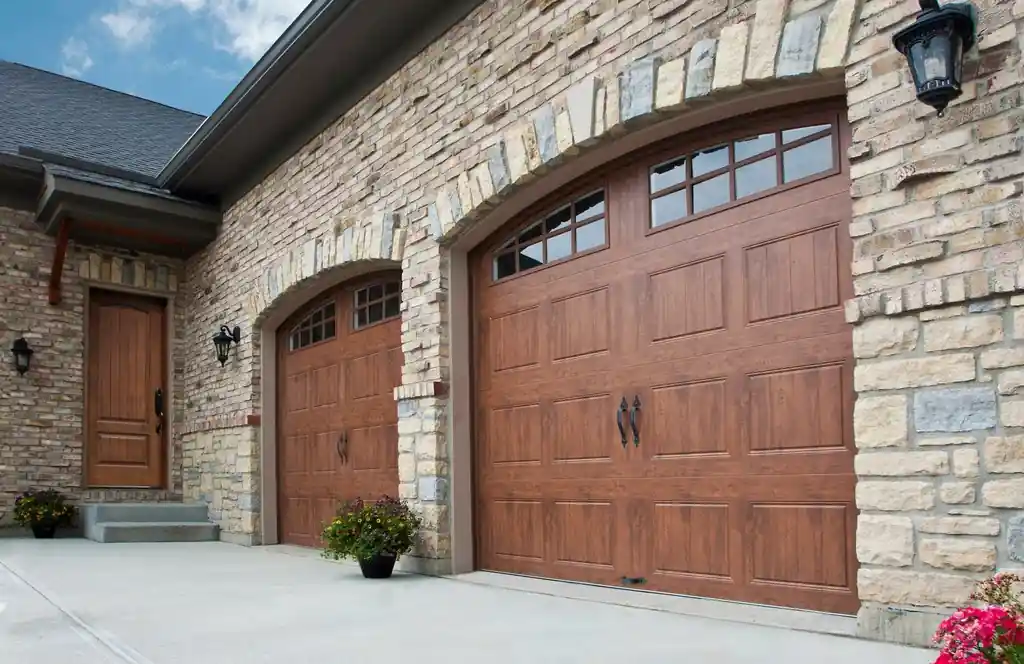
Style matters — your garage door is part of your home’s first impression.
Thankfully, roll up doors don’t force you to choose between looks and performance.
Match Your Door to Your Home’s Style
From TMAX European-Style Roll Up Garage Doors to the classic 8′ x 7′ Glossy White Roll-Up Door, there’s no shortage of design flexibility. Add window inserts, choose a faux woodgrain texture, or pick from a color chip palette that blends with your exterior.
Customization ideas for curb appeal:
- Color-matched paint systems (like Siliconized Polyester Paint System)
- Optional decorative hardware
- Built-in windows for natural light
- Sleek finishes that pair well with residential roll up garage doors or interior roll up door residential upgrades
Pro Tip: Use tools like the Door Visualizer from brands like Banko Overhead Doors or Overhead Door Company to preview styles in real time before committing.
7. Easy Maintenance and Fewer Repairs
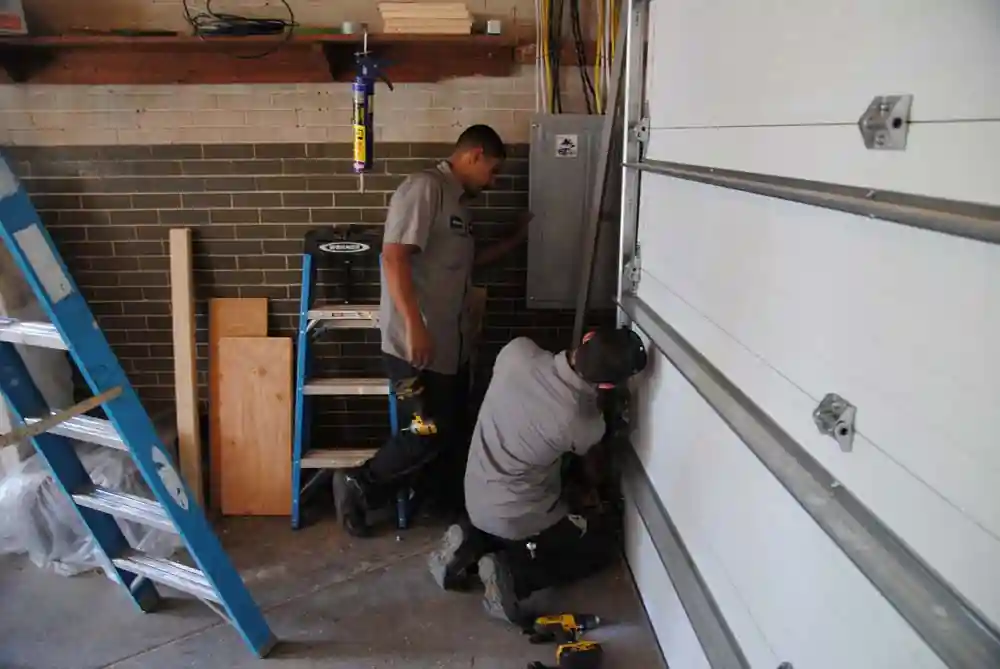
One underrated perk of roll-up garage doors? They’re refreshingly low-maintenance.
Less stress. Fewer breakdowns. More time for everything else.
Minimal Moving Parts = Lower Cost of Ownership
Traditional garage doors — especially sectional ones — come with hinges, springs, cables, rollers… and the maintenance that follows. A residential roll up garage door, on the other hand, is built with fewer moving parts and durable components, like metal slats and a rolling steel overhead door system. That means fewer things go wrong.
Maintenance perks of roll-up garage doors:
- No horizontal tracks to clean or realign
- EZ-SET® Roll-Up Spring System requires less tension adjustment
- Easy to wash (especially with baked-on finishes)
- Resistant to warping, sagging, or weather cracking
Here’s a simple comparison chart:
| Maintenance Task | Sectional Doors | Roll-Up Doors |
|---|---|---|
| Spring tensioning | Frequent | Rare |
| Track lubrication | Yes | Not required |
| Panel alignment | Occasionally | Not applicable |
| Cleaning needs | Moderate | Easy |
Pro Tip: Just add garage door cleaning to your seasonal chore list. A soft brush, water, and mild soap are usually enough — no complex toolkits or deep servicing unless damaged.
8. Installation Tips & What to Know Before Buying
Before you dive into buying a roll-up door, there are a few key things to figure out.
Like measurements, budget, and how comfortable you are with a power drill.
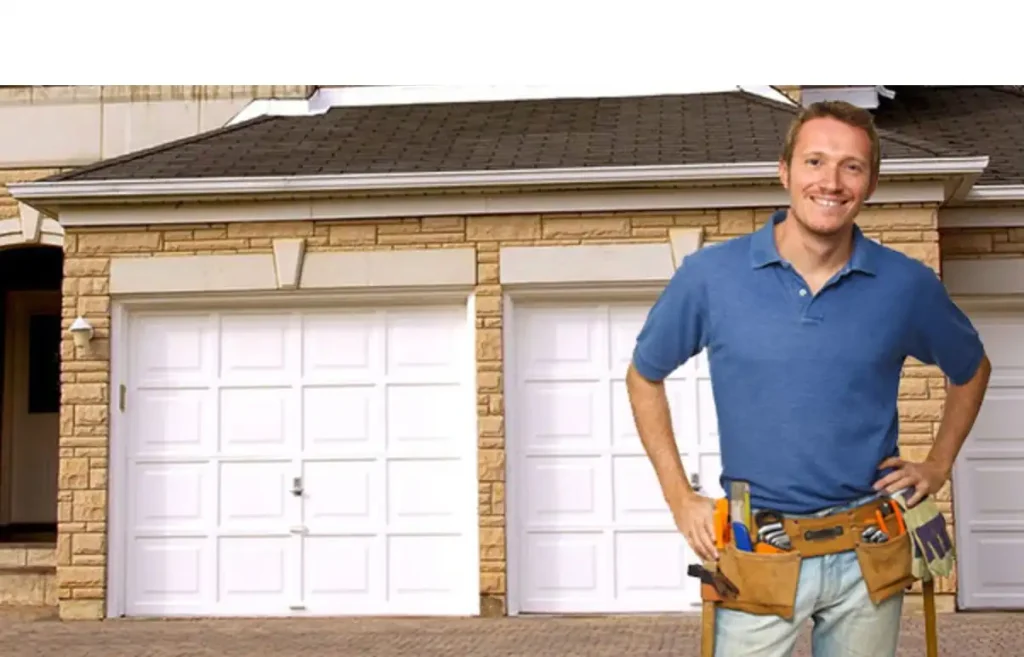
Things to Consider Before Upgrading
Here’s a breakdown of what you should look into before installation:
- Measure Twice: Account for headroom, side clearance, and depth for the coil drum.
- Professional or DIY: While garage door installation kits exist, hiring a pro ensures smoother setup and compliance with door codes.
- Check the Structure: Old framing might need reinforcement, especially when installing a steel roll-up door.
- Budgeting Tips:
- Residential roll up garage doors prices vary from $500 (basic) to $2,500+ for custom insulated roll up garage doors residential models
- Commercial garage door roll-up prices are higher due to size and ratings
- Electric roll up garage door systems add more to the total cost
Table: Estimated Cost Breakdown
| Door Type | Base Price | Insulated Upgrade | Smart Opener Add-On |
|---|---|---|---|
| Basic Manual | $500–$900 | +$300 | N/A |
| Mid-Range Insulated | $1,000–$1,800 | Included | +$200–$400 |
| High-End Custom | $2,000+ | Included | Included in some |
Pro Tip: Always ask if the door includes guide rails, locking system, and door seals. These are essentials that protect your investment long-term.
9. Smart Features & Home Integration
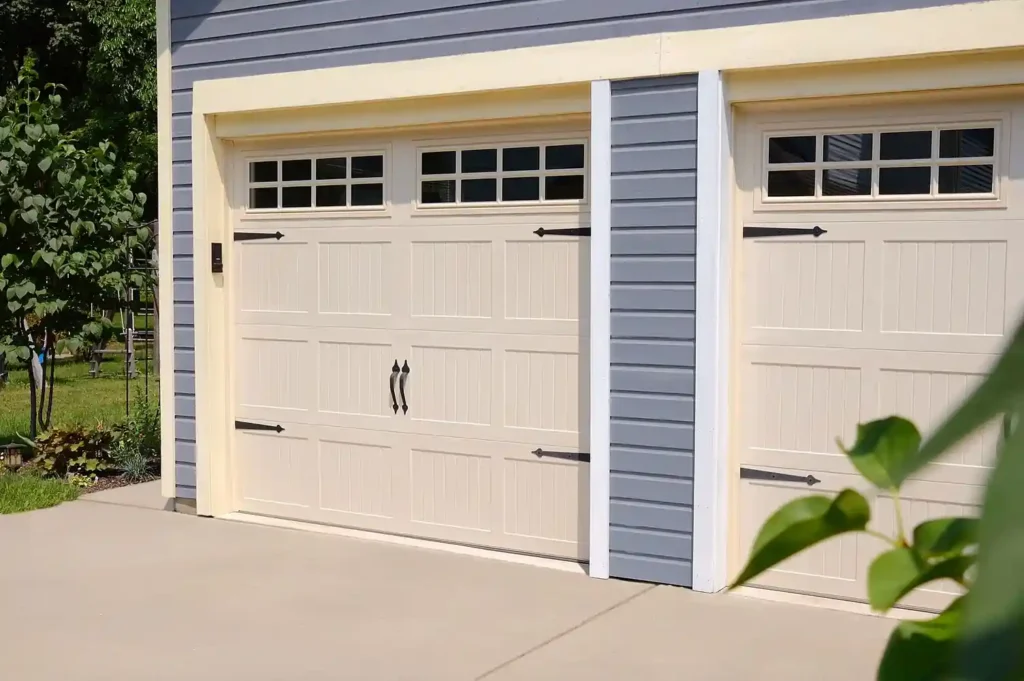
Today’s garages are getting smarter — and roll-up doors are keeping up.
You can now open, close, or monitor your garage from your phone. Pretty neat, right?
Bringing Your Garage into the 21st Century
Many modern residential roll up garage doors now come with smart features built-in or compatible add-ons. Whether you’re upgrading your garage or building new, adding automation isn’t just convenient — it adds resale value and peace of mind.
Here’s what you can integrate:
- Wi-Fi Openers: Control and monitor your garage remotely via mobile apps like MyQ or Aladdin Connect.
- Infrared Sensor System: Enhances safety by preventing accidental closings.
- Smart Locks & Cameras: Combine your door with keypad locks, cameras, or motion sensors.
- Voice Control: Some systems work with Alexa, Google Assistant, or Siri.
Pro Tip: If you already have a smart home hub, make sure your garage door system supports integration. Some electric roll up garage doors come pre-equipped with automation-ready motors — saving you money and setup time.
| Smart Feature | Benefits | Works With |
|---|---|---|
| Wi-Fi Opener | Remote control, alerts | Smartphones, tablets |
| Infrared Sensors | Prevent accidents | All households |
| Smart Locks | Access management | Smart home systems |
| Camera Integration | Real-time security | Alexa, Ring, Google Nest |
Question to ask yourself: Can I open my garage from anywhere?
With a smart setup? Absolutely. Even while on vacation.
10. Real-Life Use Cases & Testimonials
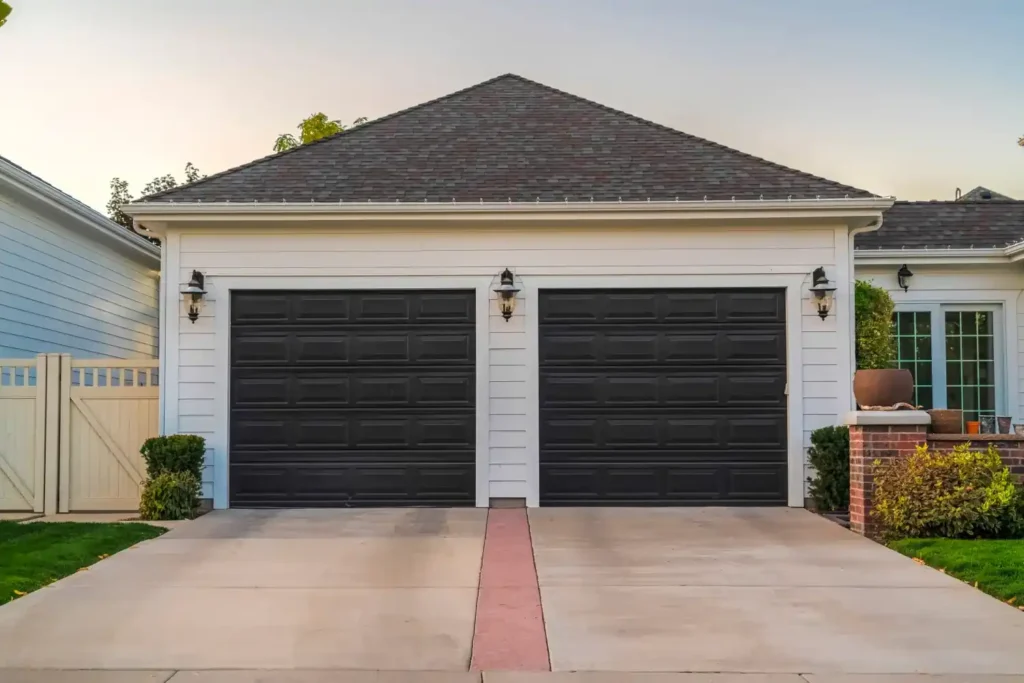
Let’s bring this home — literally. What are real homeowners saying about switching to roll-up garage doors?
Why Homeowners Are Switching to Roll Ups
It’s not just marketing — people are genuinely making the switch to residential roll up garage doors because they solve real-world problems. Below are practical, detailed use cases from homeowners who needed specific features like durability, insulation, compact design, and smart integration.
🏙️ 1. Small Urban Garages — Space Reclaimed
A homeowner in downtown Boston had a low-ceiling garage in a century-old brownstone. The old sectional garage door kept scraping the ceiling-mounted shelves. After switching to a steel roll-up door, they gained:
- 12 inches of overhead clearance
- Full use of ceiling racks for bikes and storage bins
- Room to install a ceiling-mounted heater
They used a white, insulated roll-up garage door with a guide rail locking system for added security.
❄️ 2. Cold Climate Efficiency — Energy Savings Realized
In Minneapolis, a family installed an insulated double-steel faced conventional door with polyurethane foam core. The garage is attached to their home — right below their nursery.
Results after 6 months:
- Indoor draft reduced by 35% (measured using a home energy audit)
- Garage temp stayed 10–12°F warmer in winter
- Monthly heating bills dropped by 8–10%
Their door came with full bottom and side seals + infrared sensor system.
🔒 3. Security Upgrade — Peace of Mind in Suburbs
A homeowner in Dallas had a break-in through their old wooden swing-out garage door. They upgraded to a rolling steel overhead door with a built-in smart lock and motion-activated camera.
Features they chose:
- Fire-rated Thermiser® model
- Rolling code keypad entry + smartphone control
- Integrated camera that notifies on movement
We sleep better knowing it’s nearly impossible to force this door open.
🔧 4. Shed and Workshop Projects — Compact Convenience
A DIYer in Oregon added a roll up door for sheds to his 12×16 woodshop. He chose a mini-storage door with manual locking and a compact drum. What he liked:
- Didn’t need electrical connection
- Fit perfectly under a 7′ roofline
- Easy weekend DIY install with just 2 helpers
This saved on pro install costs and freed up the full interior ceiling for tool racks.
5. Design and Curb Appeal — Looks Matter Too🏡🎨
In Palm Springs, a designer homeowner used a residential roll up garage door with windows — specifically, a custom aluminum/glass panel design with frosted privacy inserts.
Outcome:
- Natural light inside the garage gym
- Visual match with modern front façade
- Improved home value and street appeal
Used a Door Visualizer tool before ordering to preview color and window layout.
Pro Tip: Not all roll-up doors are the same. Look for trusted brands like Ideal Door, Overhead Door Company, or regional pros offering custom sizes & colors— especially if you’re after a perfect fit for your project type (shed, attached garage, interior partition, etc.).
Final Thought:
A residential roll up garage door isn’t just a functional upgrade — it’s a smart, space-saving, and stylish solution for modern homes. Whether you’re looking for better insulation, enhanced security, or just a smoother everyday experience, roll-up doors deliver on all fronts.
Their compact design, durability, and customizable looks make them perfect for homeowners who want both performance and curb appeal. From manual roll-up doors for small garages or sheds to automated, insulated models with smart tech, there’s an option to fit every need and budget.
In short, investing in a roll-up garage door means you’re choosing convenience, safety, and long-term value — all rolled into one.
Frequently Asked Questions ✅
1. What are the benefits of installing a roll-up garage door at home?
They save space, operate quietly, offer excellent insulation, and are easier to automate and maintain compared to sectional or swing-out doors.
2. Are roll-up garage doors good for cold climates?
Yes! Choose an insulated roll-up garage door with a foam core. It helps retain warmth, reduces drafts, and cuts down heating bills.
3. Can I install a residential roll up garage door myself?
If you’re handy, you can install manual roll-up doors for sheds or small garages. For full-size or motorized models, professional installation is best for safety and warranty.
4. How much does a residential roll-up garage door cost?
Expect $850–$2,500 depending on material, size, insulation, and automation. Custom roll-up doors with glass panels or smart tech can cost more.
5. Do roll-up doors come with smart features?
Yes. Many brands offer Wi-Fi garage door openers, smartphone app controls, camera integration, and keypad entry systems.
6. What materials are best for roll-up garage doors?
Galvanized steel is most common for durability. You can also get aluminum, wood-overlay, or glass panel roll-up doors for custom aesthetics.
7. Is a roll-up garage door secure enough for home use?
Absolutely. Choose doors with locking bottom bars, rolling code openers, and steel slats. These are much harder to force open than wood or tilt-up doors.
8. Can I add windows to a roll-up garage door?
Yes! Many models offer window inserts, frosted glass options, or full-view aluminum and glass roll-up doors perfect for gym or studio spaces.
How long does a roll-up garage door last?
With regular maintenance, quality doors can last 20–30 years Look for brands offering limited lifetime warranties on springs or slats.
10. What’s the best roll-up garage door for small garages or sheds?
For compact spaces, go with mini roll-up shed doors or rolling doors with drum-style headers that mount cleanly above the opening. These maximize overhead space and are easy to operate manually.

